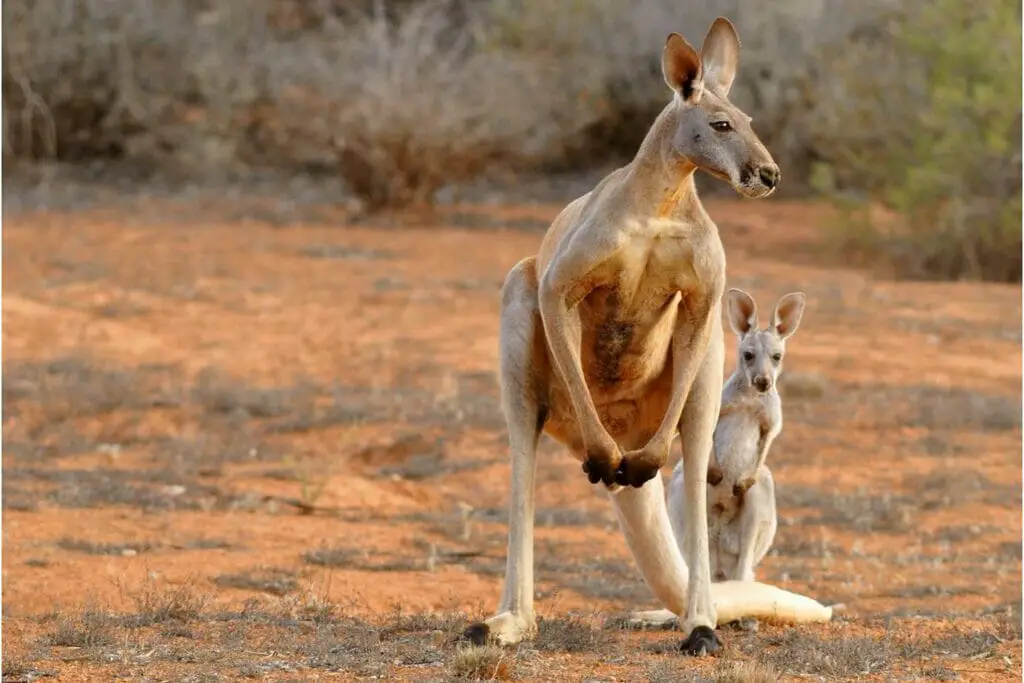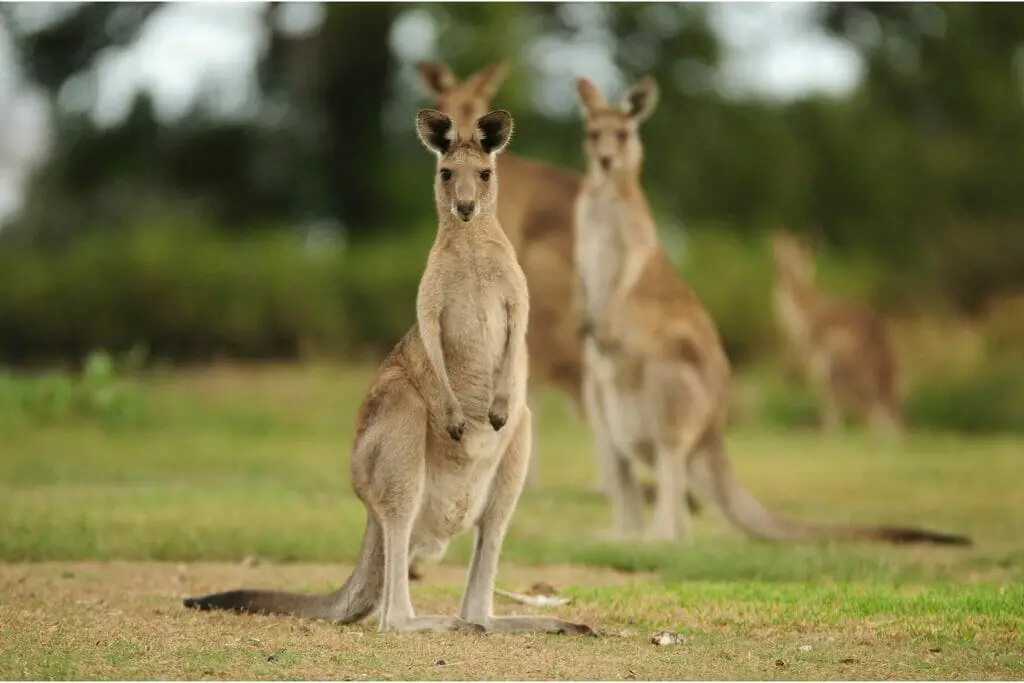Kangaroos are known for having some pretty unique anatomical features. Female kangaroos, for example, have pouches on their lower abdomens called marsupiums to accommodate their young since joeys are not fully developed when they are born.

But that’s not the only surprising thing about a female kangaroo’s anatomy. While both the females and males of most mammal species are expected to have only one set of genitalia, kangaroos (and some other marsupials) are the exception to the rule.
Read on to learn more about kangaroo anatomy: specifically, how many vaginas a kangaroo has. The answer might shock you!
How Many Vaginas Do Kangaroos Have?
Female kangaroos have not one, not two, but three vaginas. Yes, you did read that correctly: female members of the kangaroo species have three vaginas.
While most mammals have a single, central vagina, kangaroos have what is known as a ‘middle vagina’ (this is where the joey travels down during birth) and a ‘side vagina’ on either side of the middle vagina.
All three of the kangaroo’s vaginas share a common connection, and above the three vaginas, there are two uteruses. The ureters (connected to the kidneys and bladder) pass through the vaginas so that they cannot merge.
That’s one complex reproductive system!
Why Do Kangaroos Have Multiple Vaginas?
If you’re wondering why kangaroos have so many vaginas, you’re not alone! Scientists have put a lot of time and effort into researching this question, and they have some solid theories as to why the kangaroo’s reproductive organs are structured this way.
First of all, this reproductive setup is actually not unique to the kangaroo. It’s shared by various marsupial species, including Tasmanian devils, wombats, and koalas.
The reason why female kangaroos and other female marsupials have three vaginas instead of one is, first of all, to provide separate internal pathways for sexual intercourse and birth. The two side vaginas are designed to carry sperm upwards to the uterus.
If you’re confused as to why any animal would need two different vaginas just for sperm, it’s because male kangaroos have dual-pronged penises (that’s another fun fact for you).
The middle vagina, meanwhile, is not used for intercourse, but is exclusively dedicated to giving birth.
If you look at a diagram of the female kangaroo’s reproductive system, you’ll see that the ureters connecting the kidneys to the bladder pass straight through the space between each of the vaginas.
This is different from the way the ureters develop in placental mammals – and not just because of the difference in number of vaginas.
It’s actually structured this way in marsupials so that the different reproductive tubes can’t fuse into one the same way they do during human development.
How A Kangaroo’s Vaginal Structure Impacts Reproduction

As you might expect, having three vaginas rather than one has some pretty significant impacts on how and when kangaroos give birth.
Biologists have theorized that the three-vagina structure might actually explain why joeys are born prematurely and need to finish developing in their mothers’ marsupiums (pouches).
Each of the three vaginas that make up part of the female kangaroo’s reproductive system is narrower than what you’d expect from a single-vagina system.
Because the tubes are so narrow, scientists think that the joey may not actually be able to develop to anything larger than the size of a jelly bean before it’s born and crawls into its mother’s pouch.
The complexity of the kangaroo’s reproductive system also means that a female kangaroo can, in theory, be pregnant all of the time.
Kangaroos are still technically pregnant while their joeys are in their marsupiums, and while this is happening, another joey can develop inside the uterus.
Female kangaroos can be observed in nature nourishing three joeys at once: one outside the pouch, one inside the pouch, and one in embryo form still developing in the uterus.
Frequently Asked Questions
Do Kangaroos Have Three Wombs?
Because a kangaroo has three vaginas, you could be forgiven for assuming that this marsupial also has three wombs. However, this is not the case. Female kangaroos do have two uteruses, though.
How Many Months Is A Kangaroo Pregnant?
A kangaroo is only pregnant (in the sense that the joey is in the uterus) for about a month (28 days) in total. At this stage of development, the joey is roughly the size of a jelly bean and is ready to enter the mother’s pouch.
After that, the joey stays in the pouch for anywhere up to 6 or 9 months.
So, if we consider a kangaroo pregnancy to only encompass the time in which the joey is inside the uterus, a kangaroo pregnancy is 28 days long.
However, if we also include the time during which the joey is not developed enough to leave the marsupium, a kangaroo pregnancy in total can last anywhere from 7 months to 10 months.
How Does A Kangaroo Give Birth?
When a kangaroo is ready to give birth, she adopts the birth position (sitting upright, usually against a tree) and starts to intensively clean her pouch to get it ready for the joey.
The joey exits through the middle vagina and independently climbs up into the pouch, where it can then attach to its mother’s teat and start to feed.
Typically, the birth does not take very long due to the very small size of the joey when it is born.
Final Thoughts
Kangaroos have three vaginas, which is a reproductive trait shared by many marsupial species.
Two of a kangaroo’s vaginas (the ones on the sides) are to accommodate the male’s double-pronged penis and take sperm to the uterus, while the middle vagina is where the joey comes down during birth.
Kangaroos also have two uteruses and ureters that pass through the spaces in between each of the vaginal tubes to prevent the tubes from fusing together.
The kangaroo reproductive system is designed to allow for the development of a joey in the pouch and in the uterus at the same time.To sum up, Kangaroos, native to Australia, possess two-pronged vaginas allowing perpetual pregnancy, a bizarre but efficient trait. During mating, these structures complicate the process, requiring privacy. Male kangaroos bet their chance to breed with a female. This insight into their reproductive mechanisms, akin to the size of a jellybean, remains a fascinating facet of kangaroo biology.









